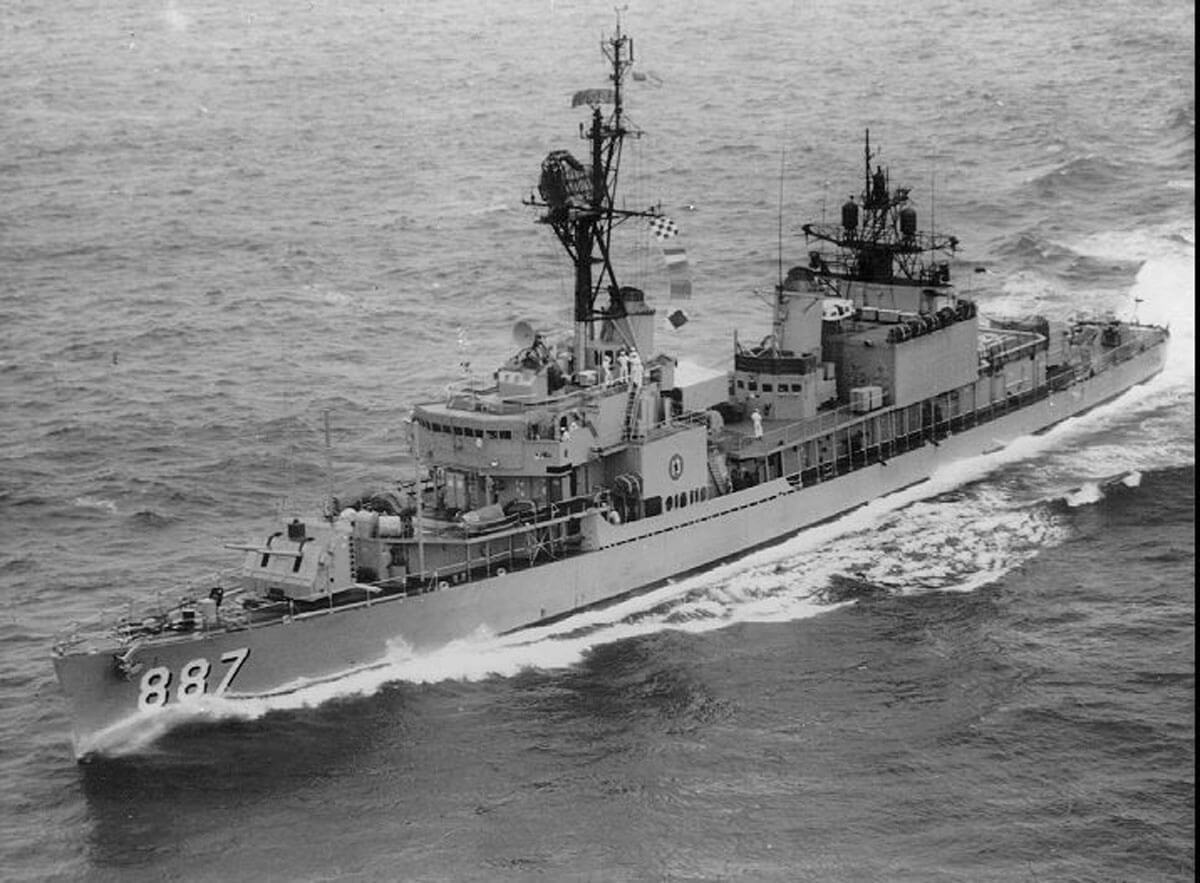Asbestos Exposure on the USS Brinkley Bass

Hull Number: DD-887
Type: Destroyer
Class: Gearing
Built: Orange, TX
The Consolidated Steel Corporation of Orange, TX constructed this Gearing-class Destroyer at the very end of World War II. Measuring just over 390 feet from bow to stern, the ship carried a complement of 345 officers and enlisted. It was commissioned by the U.S. Navy in October of 1945, two months following the end of the Second World War. It served in both the Korean and Vietnam Wars, serving as a guard, as well as performing search and rescue duties. It was decommissioned in December of 1973.
Tragically, veterans who served aboard the USS Brinkley Bass were likely exposed to asbestos over the course of performing their regular duties. Until the mid-1970’s, asbestos was frequently found in equipment used on ships like the Brinkley Bass, including boilers, turbines, valves, pumps, and electrical components. Materials such as gaskets and packing were also often made entirely from asbestos. These items were found in an especially high concentration in the boiler and engine spaces, which, when combined with poor ventilation below deck, put the sailors who worked in those areas at a significantly heightened risk. The companies who provided the Navy with this asbestos equipment were often aware of the health risks of asbestos, but did nothing to warn those serving on board the USS Brinkley Bass or its contemporaries. This negligence led to many veterans developing mesothelioma years after their Navy careers had ended.
Navy veterans who have been diagnosed with mesothelioma have a right to seek compensation. Settlements can offset or cover the often overwhelming costs of medical care, and may provide additional sums for pain and suffering endured. It is important to seek legal counsel soon after a mesothelioma diagnosis is made however, as the law limits the time during which a lawsuit can be filed.
